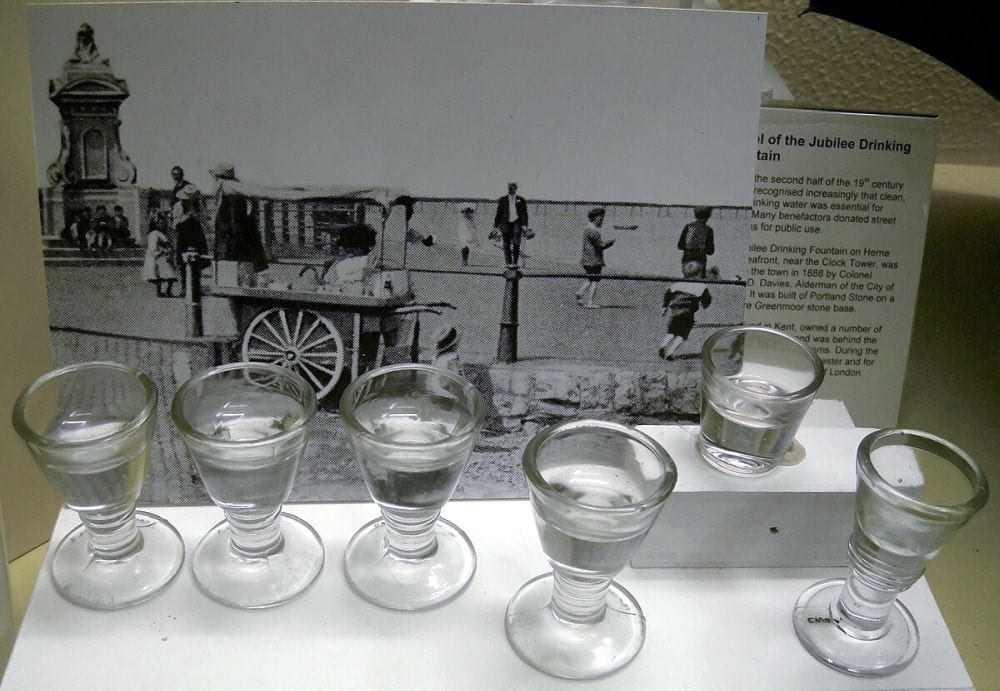
[Image above] Example of penny licks, the small glass cups used by street vendors to serve ice cream in the 19th century. Credit: Linda Spashett, Wikimedia (CC BY 3.0)
Nothing says summer quite like a frozen or chilled dessert, and this month the U.S., courtesy of Ronald Reagan, is celebrating one of the season’s most iconic treats: ice cream.
Ice cream has a long history, but the dessert remained a rare and exotic treat until the spread of insulated ice houses and the invention of ice cream makers in the 19th century. The popularity of ice cream grew rapidly, and even though recent decades have witnessed a decline in consumption, people in the U.S. still eat about 12 lbs. per year.
Even as the flavor and texture profiles for ice cream have evolved, so too have the containers in which the dessert is served. The iconic waffle cone that many people prefer in current times was not invented until the early 20th century. Prior to that invention, street vendors typically served ice cream to customers in small glass cups called penny licks.
Penny licks featured a thick glass base and shallow depression on top in which the ice cream was placed. This design made the glass appear quite full when in fact the quantity of ice cream was fairly small—hence the “lick” part of the name.
Even though penny licks could not be eaten like a waffle cone, they were still convenient containers for customers because they would simply hand the empty glass back to the vendor. However, this practice came with a dire consequence—the spread of disease.
Vendors often washed penny licks poorly or not at all between customers, and the city of London, England, eventually banned the use of penny licks in 1898 due to concerns about the spread of disease, particularly cholera and tuberculosis. The invention and growing popularity of waffle cones soon after led to the penny lick’s permanent retirement, as described in the video below.
Fortunately, this history did not permanently damage the public’s perception of glass as a container material for ice cream. Picture the iconic bell-shaped soda fountain glass in every 1940s and 1950s soda shop, or the well-known tulip-shaped sundae dish.
In Columbus, Ohio, where I live, the local conservatory is even offering a new glass class this summer to create your own blown ice cream bowls. After attending this class for myself, I can confidently say nothing beats glass for serving ice cream in style!
